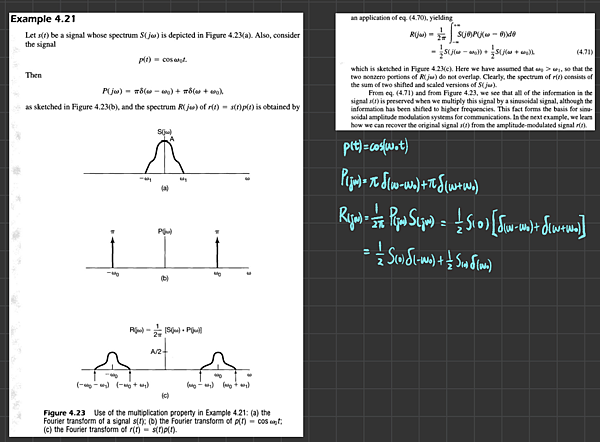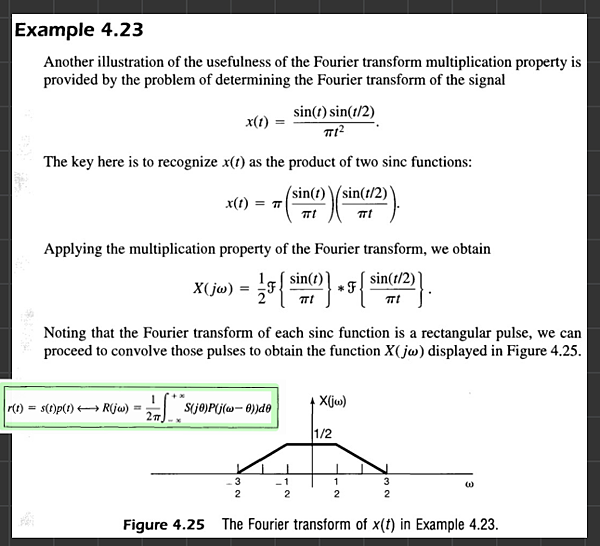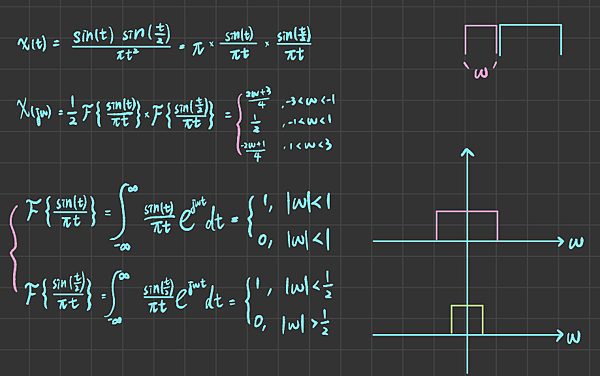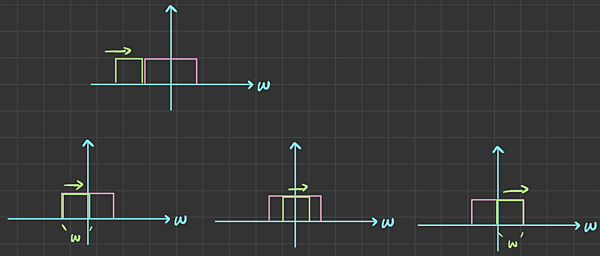




Let s(r) be a signal whose spectrum S(jo is depicted in Figure 4.23(a). Also, consider the signal p(t)-cos ω0. Then as sketched in Figure 4.23(b), and the spectrum R(jw) of t)-s()p)is obtained by S(jo) Plju) A/2 Figure 4.23 Use of the multiplication property in Example 4.21: (a) the Fourier transform of a signal s(t); (b) the Fourier transform of p(t)cos (c) the Fourier transform of r(t)-s(t)p(t).
Let us now consider r(t) as obtained in Example 4.21, and let 8(t) = r(t)pt), where, again, p(t) = cos wot. Then, R(jw), P(jw), and G(jw) are as shown in Figure 4.24. From Figure 4.24(c) and the linearity of the Fourier transform, we see that g(1) is the sum of (1/2)s(t) and a signal with a spectrum that is nonzero only at higher frequen- R(ja) A/2 WO WO (a) Pl) TT GO wu (b) G(jw) A/4 A/2 A/4 -200 2w (c) Figure 4.24 Spectra of signals considered in Example 4.22: (a) R(jw); (b) P(jw); (c) Gw). The Multiplication Property 325 cies (centered around +2wo). Suppose then that we apply the signal g(1) as the input to a frequency-selective lowpass filter with frequency response H(jw) that is constant at low frequencies (say, for w<wi) and zero at high frequencies (for 1>wi). Then the output of this system will have as its spectrum H(jw)G(jw), which, because of the particular choice of H(jw), will be a scaled replica of S(jw). Therefore, the output itself will be a scaled version of s(t). In Chapter 8, we expand significantly on this idea as we develop in detail the fundamentals of amplitude modulation.
another illustration of the usefulness of the Fourier transform multiplication





 留言列表
留言列表


